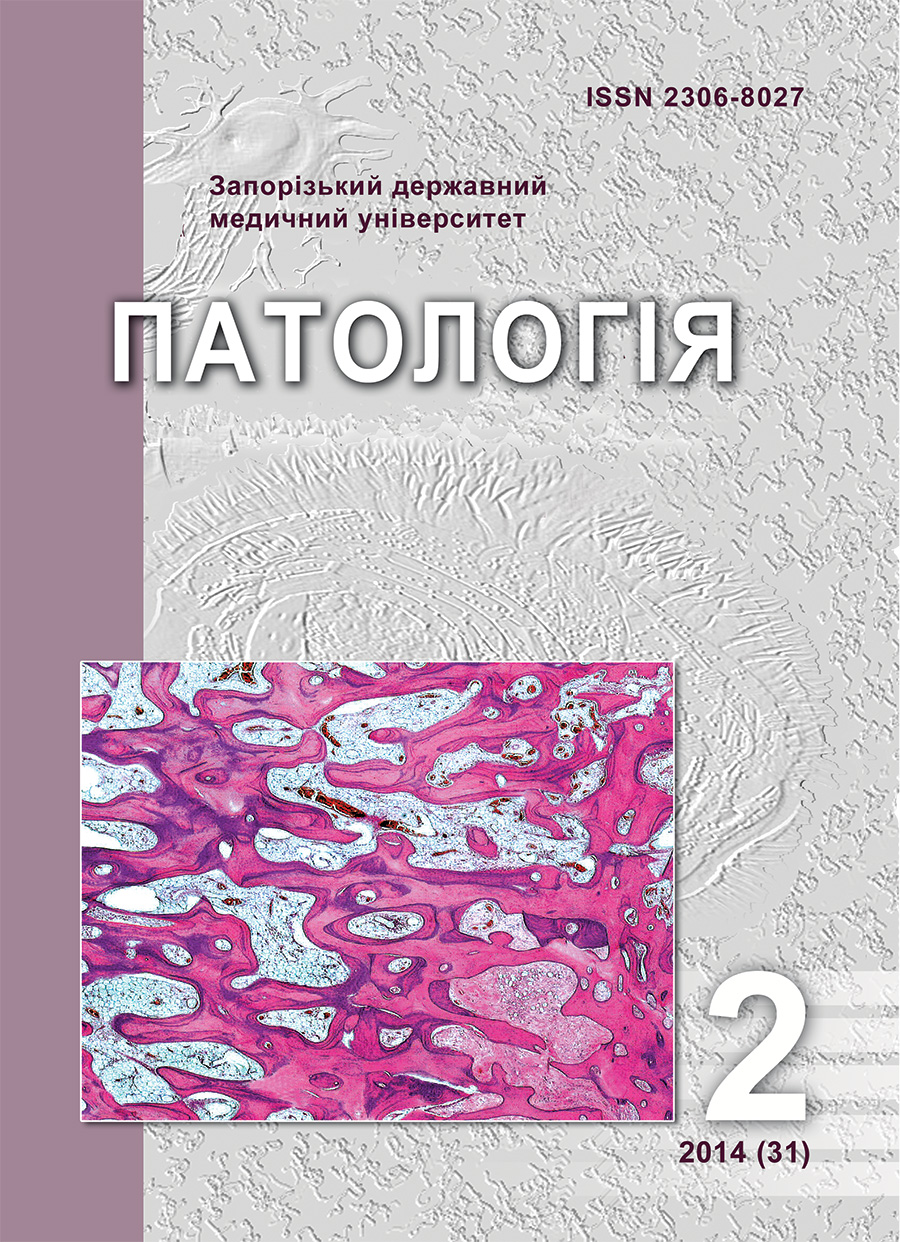Clinical observation of surgical treatment of arterial aneurysm of the anterior communicating artery of the brain complicated by intraventricular hemorrhage and obstructive hydrocephalus
DOI:
https://doi.org/10.14739/2310-1237.2014.2.28604Keywords:
Aneurysm, Endovascular Procedures, Intracranial Hemorrhage, DrainageAbstract
Aim. The problem of choosing treatment tactics in case of arterial aneurysm has been of particular relevance these days in the context of the treatment of intracerebral bleeding – one of the main causes of acute cerebrovascular events (ACE).
Methods and results. To solve this problem, a surgical treatment of arterial aneurism of the anterior communicating artery – left arteria cerebri anterior (and a corresponding treatment method was developed) of a 48-year-old patient, 15 days after the ACE episode classified as massive subarachnoidal bleeding – was carried out. It appeared that endovascular obturation of arterial aneurysm is associated with reduced death risk and occurrence of postoperative complications. However, in the case of intraoperative bleeding transcranial operation often appears to be the only method for further treatment. Ventricular fibrinolysis allows effectively treating the ventricular system in case of intraventricular hemorrhage and contributes to more rapid recovery of liquor (spinal fluid) circulation.
Conclusion. Ventricular-peritoneal shunting is an efficient method to treat aresorptive hydrocephalus. Different types of treatment demonstrate that a differentiated approach towards choosing a treatment policy continues to be relevant even today, despite all the achievements and advances in modern neurosurgery.
References
Mіschenko, T. S. (2010). Epidemiolohiia tserebeovaskularnykh zahvoriuvan v Ukraini v 2007 rotsi [Epidemiology of cerebrovascular disease in Ukraine in 2007]. Sudynnі zakhvoriuvannia holovnoho mozku, 2, 3–7. [in Ukrainian].
Tkachov, V. V. Barabanova, M. A., & Muzlaev, G. G. (2010). Anevrizmaticheskie vnutricherepnye krovoizliyaniya. Chto my o nikh znaem? [Аneurysmal intracranial hemorrhages: what do we know about them?]. Rossijskij nejrokhirurgicheskij zhurnal im. prof. A. L. Polenova, 2(4), 10–21. [in Russian].
Krylov, V. V. (Ed). (2011). Khirurgiya anevrizm golovnogo mozga [Brain aneurysm surgery], (Vol. 1). Мoscow [in Russia].
Shirshov, A. V., Vereschagin, N. V., & Dobzhanskij, N. V. (2002). Khirurgicheskoe lechenie gipertenzivnykh vnutrimozgovykh krovoizliyanij, oslozhnennyh ostroj obstruktivnoj gidrocefaliej i proryvom krovi v zheludochkovuyu sistemu [Surgical treatment of hypertensive intracerebral hemorrhage complicated by acute obstructive hydrocephalus and breakthrough blood into the ventricular system]. Proceedings of the 3rd Congress neurosurgeons of Russia. (P. 387–388). Saint Petersburgs [in Russia].
Krylov, V. V., Byrov, S. A., Galankina, I. E., & Dashyan, V. G. (2009). Lokal'nyj fibrinoliz v khirurgii vnutricherepnykh krovoizliyanij [Local fibrinolysis in the surgery of intracranial hemorrhages]. Nejrokhirurgiya, 3, 4–12. [in Russia].
Bhattathiri, P. S., Gregson, B., Prasad, K. S., Mendelow, A. D., & STICH Investigators. (2006). Intravenricular hemorrhage and hydrocephalus after spontaneous intacerebral hemorrhage: results from the STICH trial. Acta Neurochir Suppl (Wien), 96.
Feigin, V. L., Lawes, C. M., Bennett, D. A., Barker-Collo, S. L., & Parag, V. (2009). Worldwide stroke incidence and early case fatality reported in 56 population-based studies: a systematic review. Lancet Neurol, 8, 355–69. doi: 10.1016/S1474-4422(09)70025-0.
Huand, J., & van Gelder, J. M. (2011). The probability of sudden death from rupture of intracranial aneurysms: a meta-analysis. Neurosurgery, 51.
Oliveira, J. G., Beck, J., Setzer, M., Gerlach, R., Vatter, H., & Seifert, V. (2007). Risk of shunt-dependent hydrocephalus after occlusion of ruptured intracranial aneurysms by surgical clipping or endovascular coiling: a single-institution series and meta-analysis. Neurosurgery, 61, 924–933. doi: 10.1227/01.neu.0000303188.72425.24.
Varelas, P., Helms, A., Sinson, G., Spanaki, M., & Hacein-Bey, L. (2006). Clipping or coiling of ruptured cerebral aneurysms and shunt-dependent hydrocephalus. Neurocrit Care, 4, 223–228. doi: 10.1385/NCC:4:3:223.
Findlay, J. M., & Jacka, M. J. (2009). Cohort Study of intraventricular thrombolysis with recombinant tissue plasminogen activator for aneurismal intraventricular hemorrhage. Neurosurgery, 55(3), 532–538.
Nyquist, P., & Hanley, D. (2007). The use of intraventricular thrombolytics in intraventricular hemorrhage. J Neurol Sci, 8, 261–284.
Fountas, K. N., Kapsalaki, E. Z., & Parish, D. C. (2005). Intraventricular administration of rt-PA in patients with intraventricular hemorrhage. South. Med. J, 98(8), 767–773.
Staykov, D., Huttner, H., Struffert, T., Ganslandt, O., Doerfler, A., & Schwab, S. (2009). Intraventricular fibrinolysis and lumbar drainage for ventricular hemorrhage, Stroke, 40, 3275–3280. doi: 10.1161/STROKEAHA.109.551945.
Downloads
How to Cite
Issue
Section
License
Authors who publish with this journal agree to the following terms:- Authors retain copyright and grant the journal right of first publication with the work simultaneously licensed under a Creative Commons Attribution License that allows others to share the work with an acknowledgement of the work's authorship and initial publication in this journal.

- Authors are able to enter into separate, additional contractual arrangements for the non-exclusive distribution of the journal's published version of the work (e.g., post it to an institutional repository or publish it in a book), with an acknowledgement of its initial publication in this journal.
- Authors are permitted and encouraged to post their work online (e.g., in institutional repositories or on their website) prior to and during the submission process, as it can lead to productive exchanges, as well as earlier and greater citation of published work (SeeThe Effect of Open Access).

